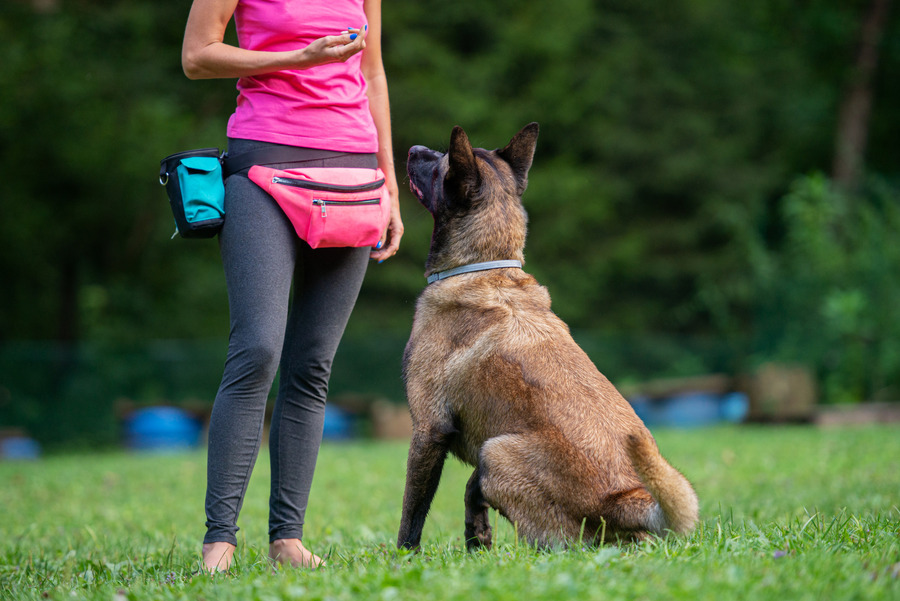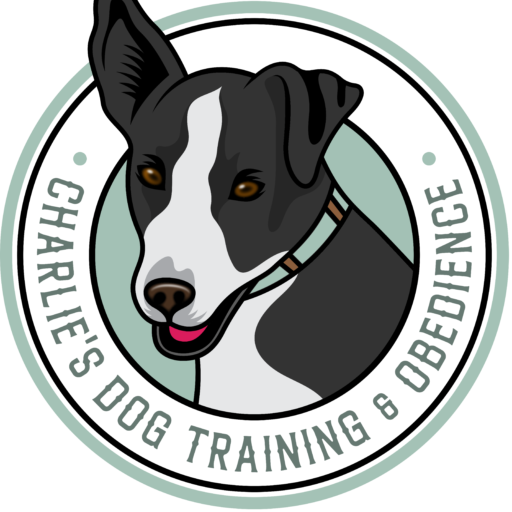
Loose lead dog walking is an essential skill for both canines and their owners. It transforms daily strolls from stressful tugging matches into enjoyable experiences for all involved. Many dog owners dream of peaceful walks with their furry companions, but without proper training, the reality often falls short of expectations.
Loose lead walking allows dogs to explore their surroundings while maintaining a relaxed connection with their handler. This technique encourages dogs to walk beside or slightly ahead of their owners without pulling on the lead. It promotes a harmonious relationship between pet and owner, reducing stress and enhancing the overall walking experience.
Training a dog to walk on a loose lead requires patience, consistency, and positive reinforcement. By mastering this skill, dog owners can enjoy relaxing strolls with their four-legged friends, fostering a stronger bond and ensuring safer, more pleasant outings for both parties. The benefits extend beyond the walk itself, contributing to a well-behaved and content canine companion.
Loose-Lead Walking
Loose-lead walking allows dogs to explore while maintaining a relaxed connection with their handler. This technique promotes a positive walking experience for both the dog and owner.
Benefits of Loose-Lead Walking
Loose-lead walking enhances the bond between dog and owner. It reduces stress on the dog’s neck and the owner’s arm, making walks more enjoyable for both parties.
This technique encourages dogs to focus on their surroundings, providing mental stimulation. It allows them to sniff and explore within safe boundaries, satisfying their natural curiosity.
Loose-lead walking also improves a dog’s impulse control. By teaching them to resist pulling towards distractions, it enhances their overall obedience and responsiveness to commands.
Additionally, this method can boost a dog’s confidence. As they learn to navigate their environment without constant tension on the lead, they develop a sense of security and trust in their handler.
Common Issues with Pulling
Many dogs struggle with pulling on the lead due to excitement or a lack of proper training. This behaviour can be frustrating and potentially dangerous for both dog and owner.
Pulling often stems from a dog’s natural instinct to explore. Without guidance, they may lunge towards interesting sights, smells, or other animals, causing discomfort and loss of control.
Distractions play a significant role in pulling behaviour. Unfamiliar environments or high-energy situations can make it challenging for dogs to maintain focus on their handler.
Inconsistent training can exacerbate pulling issues. If owners sometimes allow pulling and other times discourage it, dogs may become confused about expected behaviour.
To address pulling, consistent training methods and patience are essential. Positive reinforcement techniques, such as rewarding calm behaviour, can effectively teach dogs to walk politely on a loose lead.
Essential Equipment for Training
Proper gear plays a crucial role in successful loose-lead dog walking. The right tools can make training more effective and comfortable for both the dog and the handler.
Choosing the Right Collar or Harness
Selecting an appropriate collar or harness is essential for loose lead training. A well-fitted body harness that doesn’t tighten is often recommended. These distribute pressure evenly across the chest, reducing strain on the neck.
For some dogs, a flat collar may suffice. Avoid choke chains or prong collars, as these can cause discomfort and hinder positive training experiences.
Consider a harness with both back and front attachment points. Front-clip harnesses can help redirect a dog’s attention when they start to pull.
Importance of a Comfortable Leash
A comfortable, sturdy leash is vital for effective loose-lead walking. Choose a leash made from durable materials like nylon or leather, typically 1.2 to 1.8 metres in length.
Avoid retractable leads for loose lead training. These can be inconsistent and confusing for dogs learning to walk politely.
Opt for a leash with a comfortable handle grip to prevent hand fatigue during longer training sessions. Some leads feature padded handles or ergonomic designs for added comfort.
Advantages of a Head Halter and Double-Ended Lead
Head halters can be useful tools for dogs that tend to pull strongly. These fit around the dog’s muzzle and back of the head, providing gentle control of the dog’s direction.
When introducing a head halter, use positive reinforcement and allow the dog time to adjust. Proper fit is crucial to ensure comfort and effectiveness.
Double-ended leads offer versatility in training. These can attach to both a harness and head halter simultaneously, allowing for better control and communication with the dog.
When using a double-ended lead, handlers can easily transition between guiding the dog via the harness or head halter as needed during the walk.
Training Techniques for Success
Effective loose-lead walking requires consistent training methods and positive reinforcement. Mastering key techniques will help foster good habits and strengthen the bond between dog and owner.
Reinforcing positive behaviours
Positive reinforcement is crucial for encouraging loose lead walking. When a dog walks without pulling, immediately reward the behaviour with praise, treats or toys. Use verbal cues like ‘Yes!’ or a clicker to mark the exact moment the dog is walking correctly.
Be generous with rewards initially, then gradually reduce frequency as the behaviour becomes ingrained. Vary the type of rewards to maintain interest. High-value treats work well for most dogs, but some may prefer praise or a quick play session with a favourite toy.
Timing is critical. Reward the dog whilst they are in the correct position, not after they’ve moved away. This helps them associate the reward directly with the desired behaviour.
Implementing Consistent Commands
Choose clear, concise commands for loose lead walking and use them consistently. Common cues include ‘heel’, ‘with me’, or ‘let’s go’. Select one and stick to it.
Assign a specific cue before starting to walk. This signals to the dog what is expected. Use the command each time you begin walking or when you want the dog to return to the correct position.
Practice the command in various environments, starting in low-distraction areas and gradually increasing difficulty. This helps the dog generalise the behaviour across different situations.
Consistency extends to all family members. Ensure everyone uses the same commands and techniques to avoid confusion.
Using Treats and Toys Effectively

High-value treats are excellent motivators for loose-lead walking. Choose small, soft treats that can be eaten quickly without breaking stride. Examples include small pieces of cooked chicken, cheese, or commercial training treats.
Keep treats easily accessible in a treat pouch or pocket. This allows for quick rewards without interrupting the walk. Initially, reward frequently – every few steps. As the dog improves, gradually increase the distance between rewards.
For toy-motivated dogs, incorporate brief play sessions as rewards. Carry a small tug toy or ball and use quick 10-second play breaks to reinforce good behaviour.
Remember to phase out food rewards over time, replacing them with praise and life rewards like sniffing or brief off-lead time.
Mastering the Heel Position
The heel position typically means the dog walks on the left side, with their shoulder in line with the owner’s leg. Start training this position in a quiet area with minimal distractions.
Begin by luring the dog into position with a treat held at your left hip. Take a few steps, then reward. Gradually increase the number of steps between rewards.
Use a verbal cue like ‘heel’ just before luring the dog into position. This helps them associate the word with the action. Practice frequent changes of direction to keep the dog’s attention focused on you.
Incorporate eye contact into heel training. Reward the dog for looking up at you while in the heel position. This strengthens the connection and helps prevent distractions.
Maintaining Loose-Lead Walking Over Time
Consistent practice and varied environments are crucial for long-term success in loose-lead walking. These strategies help reinforce good habits and generalise the skill across different settings.
Regular Training Sessions and Reinforcement
Training your dog to walk on a loose lead requires ongoing effort. Set aside short, frequent sessions to practise loose-lead walking. Aim for 5-10 minutes daily, focusing on quality rather than quantity.
Use high-value treats to reward your dog for walking nicely. Gradually reduce the frequency of treats as your dog improves, but continue to offer praise and occasional rewards to maintain the behaviour.
Incorporate loose-lead walking into daily routines. Use every walk as an opportunity to reinforce good habits. If your dog starts to pull, stop walking and wait for the lead to slacken before continuing.
Be patient and consistent. Some dogs may take longer to master loose-lead walking, but persistence pays off.
Engaging in Different Environments
To stop pulling in various situations, expose your dog to different environments during training. Start in quiet areas with few distractions and gradually progress to busier locations.
Practice loose-lead walking in:
- Your backyard
- Quiet residential streets
- Local parks
- Busy urban areas
- Dog-friendly shopping centres
Vary the time of day and weather conditions to help your dog generalise the skill. Be prepared for setbacks in new or exciting environments, and adjust your expectations accordingly.
Use a front-attaching harness for added control in challenging situations. This tool can help manage pulling while you continue to reinforce loose-lead walking.
Remember to always carry treats and be ready to reward your dog for good behaviour, especially in new or distracting environments.
Frequently Asked Questions
Training dogs to walk calmly on a lead requires consistent practice and positive reinforcement. Various techniques can be employed to achieve loose lead walking, catering to different ages and temperaments of dogs.
How can you train your dog to walk on a lead without pulling?
Start by rewarding your dog for staying close to you. Take a step forward and give a treat if your dog remains by your side. Gradually increase the number of steps between treats.
Use a cue word like ‘heel’ to signal the desired behaviour. Praise and reward your dog when they respond correctly.
What exercises can help with training dogs for loose lead walking?
Practise luring your dog to follow you with treats held near your hip. Take a few steps, say ‘Yes!’ or click, then reward.
Increase the distance walked between treats as your dog improves. Incorporate turns and changes of pace to keep your dog engaged and attentive.
At what age is it appropriate to start training a puppy for loose leash walking?
Begin loose lead training as soon as your puppy is comfortable wearing a collar and lead. This can be as early as 8-10 weeks old.
Keep initial sessions short and fun. Focus on positive associations with the lead and being close to you.
What are some effective loose-leash walking techniques without using treats?
Use verbal praise and physical affection as rewards. Pat your leg and use an encouraging voice to keep your dog’s attention.
Stop walking when your dog pulls and only resume when the lead is loose. This teaches them that pulling doesn’t get them where they want to go.
How can an older dog be taught to walk calmly on a leash?
Be patient and consistent. Older dogs may take longer to unlearn established habits.
Start in a low-distraction environment and gradually increase difficulty. Use high-value rewards to motivate your dog.
Can slip leads be beneficial for teaching loose leash walking, and how do they compare to standard leads?
Slip leads can be effective for some dogs but require careful use to avoid discomfort. They provide immediate feedback when the dog pulls.
Standard leads with a harness or flat collar are generally safer and more comfortable for long-term use. They allow for more control without the risk of choking.
